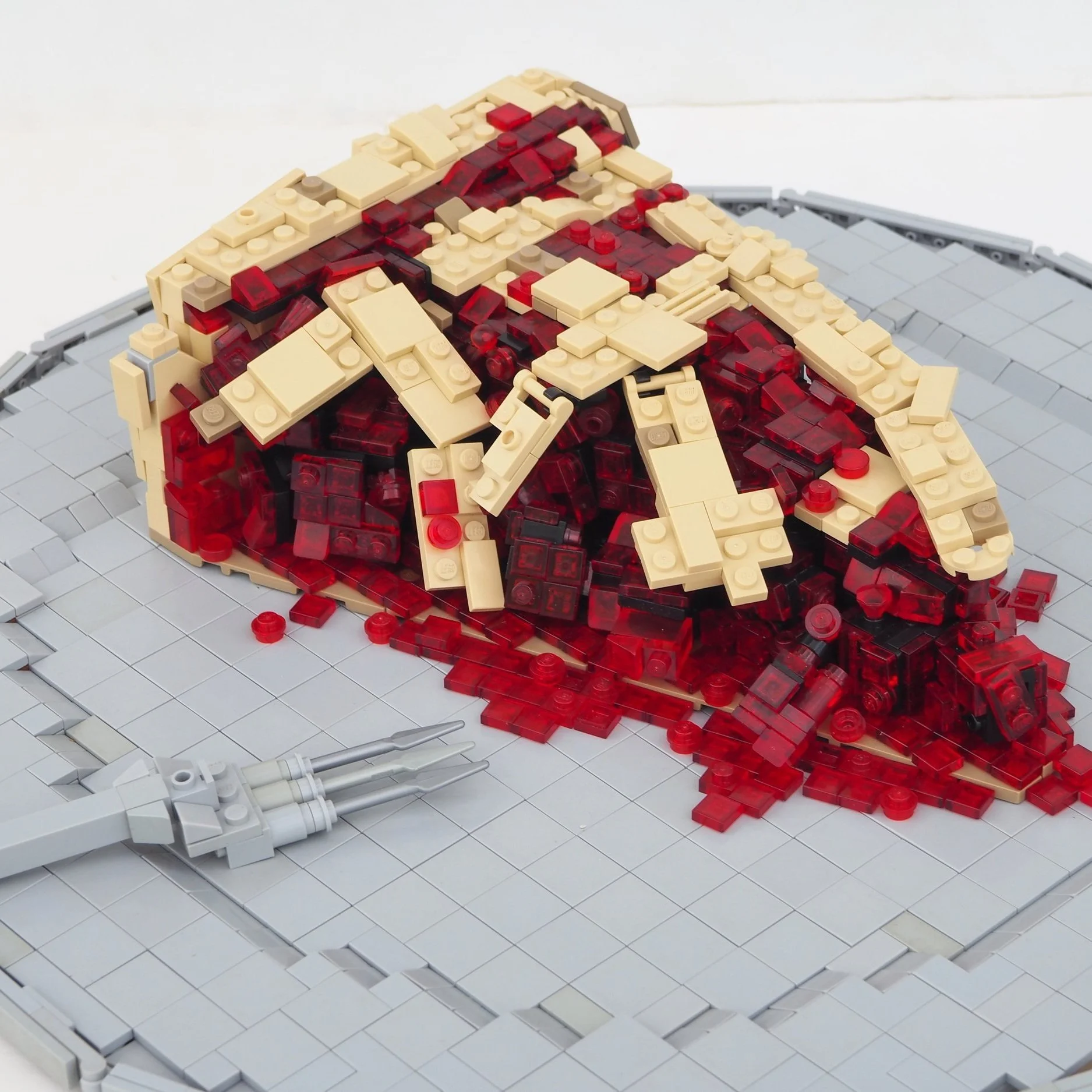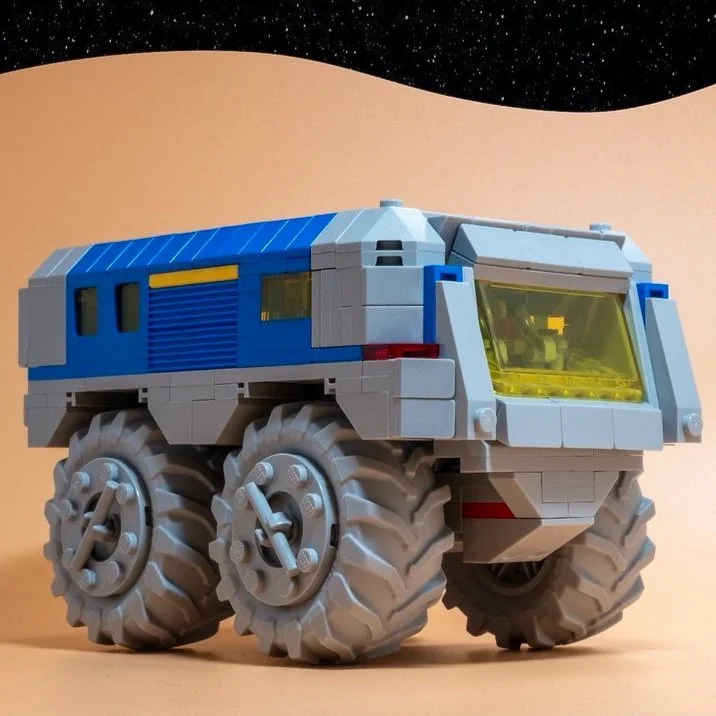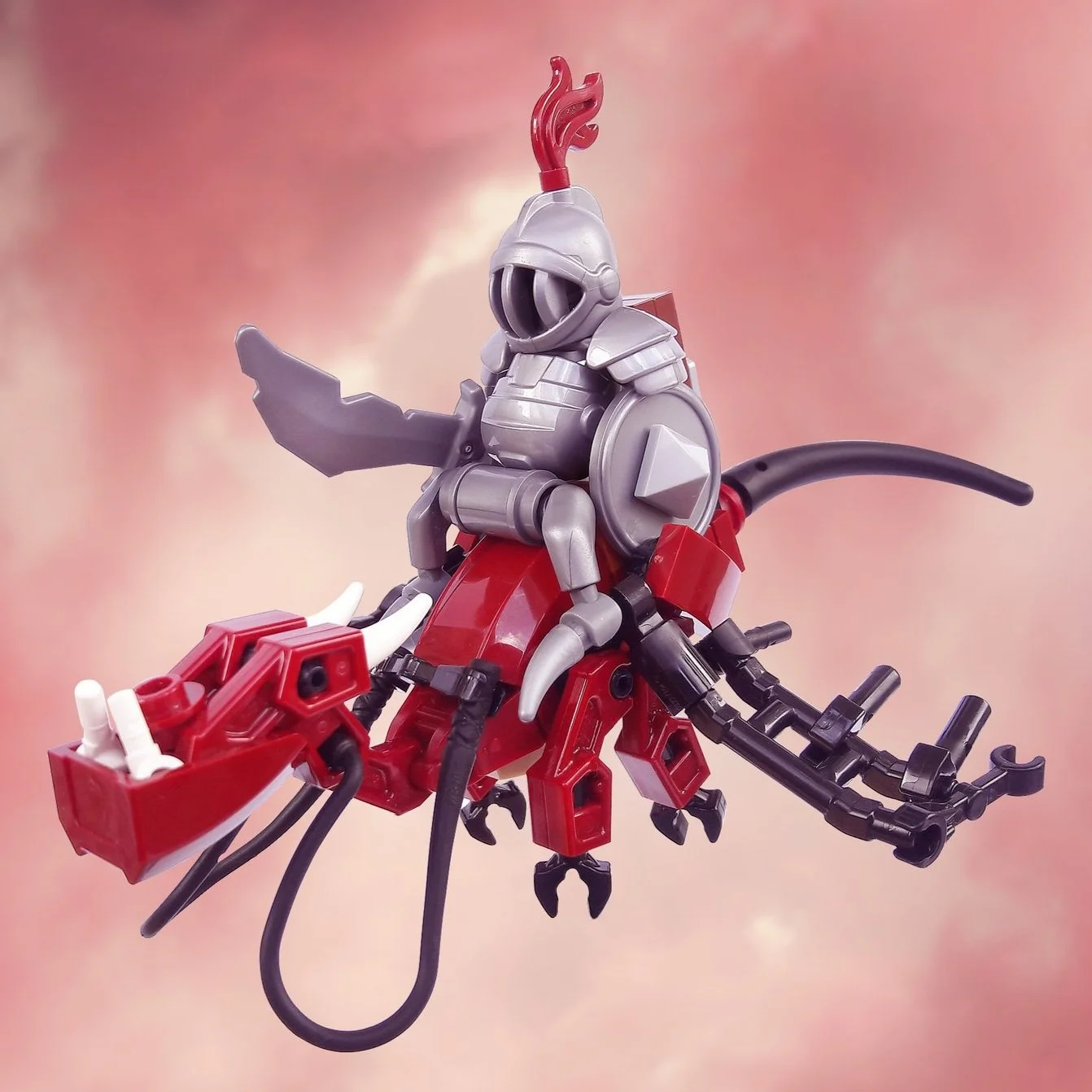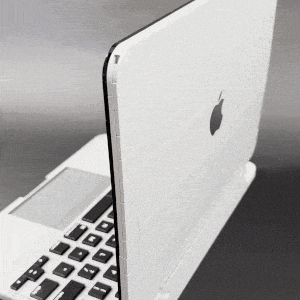Around the World in Microscale: Global Mini Modulars
/With the imminent arrival of LEGO’s Micro Ninjago City gift with purchase (specific details still unknown), it serves as an excellent opportunity to think small! Let’s travel around the world by exploring the mini modulars of Thomas Carlier.
Long-time readers will be familiar with his work as we’ve showcased his movie MOCs here before. Since then, Thomas has prepared a colorful and eye-catching book for LEGO fans so that every traveler can build a miniature city or festive street celebrating various cultures. I got the chance to talk to him about the project.
Ann: Hi Thomas! It's so nice to talk again and see your new LEGO creations. What inspired you to work on a LEGO project about national beauty and identity?
Thomas: Hello everyone! It's so great to connect with you again, and I'm thrilled to share with BrickNerd readers my latest project which was co-created with my brother, the LEGO mini-modulars book series.
Being passionate about LEGO since childhood, my brother Nicolas and I, love building MOCs (My Own Creations) of all types—vehicles, mechs, but most of all buildings and modulars. LEGO Modulars have always fascinated us because, if bought in a large quantity, it's possible to create a nice LEGO city. However, given the prices of each set, it seemed financially impossible for us to achieve it.
LEGO 10230 Mini Modulars via Brickset
That's why we took inspiration from set 10230 (released in 2012) to create our miniature city. This set features miniature versions of some famous LEGO modulars on an 8x8 stud base (instead of 32x32 studs). It's remarkable to see that even on this small scale, we can retain a maximum level of detail and still be recognizable. Being passionate about travel and fascinated by the cultural diversity found in each country, we have decided to dedicate our first book to traditional houses found in some countries all around the world.
Ann: How did the idea to publish a book come into your mind? Is it your first book for fans of LEGO?
Thomas: After years of creating digital build instructions on Rebrickable, we wanted to take things to the next level and create something tangible, something real that could be displayed in people's homes. The idea of a book felt like a natural progression. We didn't want to just make a book of assembly instructions like we used to do in the past by using specific websites like Rebrickable; instead, we aimed to create a book of ideas that would empower fans to build and invent their own mini-houses. So, this book is not just an instruction manual. It also includes several pages explaining various techniques for building roofs, windows, walls, and more.
Also, for each house, we provide alternative instructions to build variations with different colors or shapes, perfect for starting your city. For example, for these western false front mini modulars, we created different versions with various shapes and colors.
By putting all these houses side by side, it's possible to create a lovely little cowboy town!
Recently, we released Volume 2 of this series. In this second edition, we are featuring iconic buildings that can be found in a city, such as a hospital, a train station, a fire station, and more. Both books are available on Amazon.
Ann: Does every building have an exact analog from a real country, or did you generalize the national architecture in 14 examples, using your imagination?
Thomas: We tried our best to be faithful to each country. However, we encountered several challenges during the creation of the houses. The first challenge we faced was deciding which countries to feature. With a limited number of pages, around 150 pages, it was impossible to represent every country worldwide. It was important for us to build houses that could be immediately recognized. Some countries indeed have an architecture that is either too basic or too similar to another.
We had to make choices, so we started with the countries that immediately came to mind, such as Haussmann architecture in Paris, the false front facades typical of cowboy houses, and the Machiya houses of Japan. Living in France, it was very easy for us to build houses from European countries as we were able to use our own travel experience to find inspiration. This was much more difficult for other countries, as we needed to use image references to capture the unique architectural styles of those regions.
Having not yet had the chance to travel to America, Africa, Asia, and Australia, the building process was much more difficult as extensive research was required to build accurately with LEGO bricks.
The second major challenge was to avoid using pieces that were too rare or difficult to acquire via BrickLink. In the creation of our MOCs, we often use rare or discontinued pieces, and that's not a problem because the model will only be built in a single copy, regardless of the price of the piece in question. When producing a book intended for a wide audience, it's important to ensure that everyone can build the houses, and therefore, we had to use inexpensive and readily available pieces on BrickLink. This was frustrating because in many situations, we wanted to add a piece that would feature an interesting "NPU" (nice part usage), but unfortunately, we had to forgo that idea because the piece was too expensive. Our rule was to ensure that each model did not exceed $20 on BrickLink.
Finally, the last challenge was to make the reader's task as easy as possible during the construction of our houses. Although it's a book, we wanted everyone to be able to easily order the pieces on BrickLink without having to buy them one by one. So, we generated hundreds of QR codes that allow users to download the complete list of pieces with just one click, making it quick to order the bricks on BrickLink. This was something that meant a lot to us, and I'm glad we were able to accomplish it.
Ann: Your 'Mini Modulars' project is not your first experience of microscale building, is it?
Thomas: No, indeed, it's not. Honestly, I find that microscale construction has something magical about it, as it allows you to build huge things like cities while using a limited number of pieces.
Being a timeless Disney fan, I tried a few years ago to build a small version of Disneyland Paris and Disney Studios using LEGO bricks. Because the place is way too big to make it in regular minifigure size, I decided to build it in microscale. So, I created the park entrance and some famous rides like Big Thunder Mountain, the Disney Castle, Space Mountain, and Tower of Terror. Looking back, I think today I would be able to build it better, but it was my first experience, and I really enjoyed it a lot.
My brother, on the other hand, has much more experience than me in microscale. He has already created numerous creations that he posts on Instagram, @nicolas_builds. He has created more than half of the mini modular, and I believe this book wouldn't have come to fruition if he hadn't put so much effort into it.
Here are some builds created by Nicolas:
Ann: What are the key details of architecture that help us recognize the style of each mini modular? Is it a traditional color palette, construction of the roof, etc.?
Thomas: Each country has its own architectural style, and we tried as much as possible to respect local traditions. In Southern countries, it's pretty common to find colorful buildings, like the "Casa de Cartagena" in Colombia, known for flashy red / pastel green colors. If you've watched Disney's movie "Encanto," you've surely noticed the casita, a very colorful house typical of the region!
Here is another example of bright-colored houses that can be found in Castro, Chili.
The shape of the building's roof can also be a distinctive element. For example, the canal houses in Amsterdam have bell-shaped roof.
This is also the case with the houses found in Oia (Santorini, Greece), which feature a dome-shaped roof with typical Mediterranean blue and white coloring.
Finally, the appearance of the walls can have certain characteristics. In Germany and even in France (in Alsace), it is possible to find timber-framed houses featuring a large visible wooden structure.
Ann: Those are all so gorgeous. Which mini modular is your favorite?
Thomas: I do love all the mini modulars but If I had to choose I would say the machiya. It was actually one of the most challenging houses to create, as the front of these buildings has a very distinctive look with rather dark colors. It was difficult to find a good balance between black, dark orange, and dark tan while checking the availability of the pieces on BrickLink. After several attempts, I am really happy with the final result.
Being born and still living in France, I must say that I also love the Haussmannian house from Paris!
Ann: My favorite modular is the Japanese one... or Norwegian... the more I consider them all in full detail, the more I can’t choose! Are you a big fan of traveling? Does your Mini Modulars project reflect your personal desire to visit some of these countries?
Thomas: Yes, my brother and I are passionate about travel. Learning, and especially discovering the traditions and culture of a country, is, in my opinion, the most valuable richness in the world. I've had the opportunity to travel to many European countries like Spain, Germany, Belgium, Switzerland, and Italy, as well as Sweden and Finland. I haven't had the chance to visit other continents yet, but I really hope to one day explore Canada! Through this book, we had the opportunity to accomplish our dreams we haven't been able to achieve yet!
Ann: Thank you very much, Thomas! We look forward to seeing your next LEGO project!
Thomas: Thank you very much for your kind interview. It is such an honor to be featured again on BrickNerd, and I hope this interview will help readers to better understand the process of creating a book.
What building style would you like to see recreated in LEGO microscale? Let us know in the comments below.
Do you want to help BrickNerd continue publishing articles like this one? Become a top patron like Charlie Stephens, Marc & Liz Puleo, Paige Mueller, Rob Klingberg from Brickstuff, John & Joshua Hanlon from Beyond the Brick, Megan Lum, Andy Price, Lukas Kurth from StoneWars, Wayne Tyler, Monica Innis, Dan Church, and Roxanne Baxter to show your support, get early access, exclusive swag and more.































